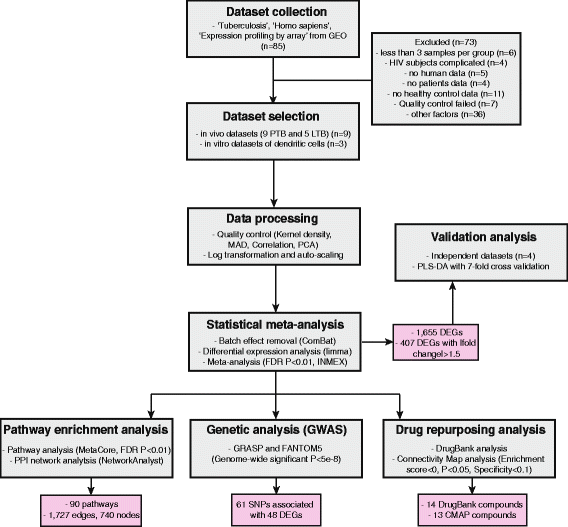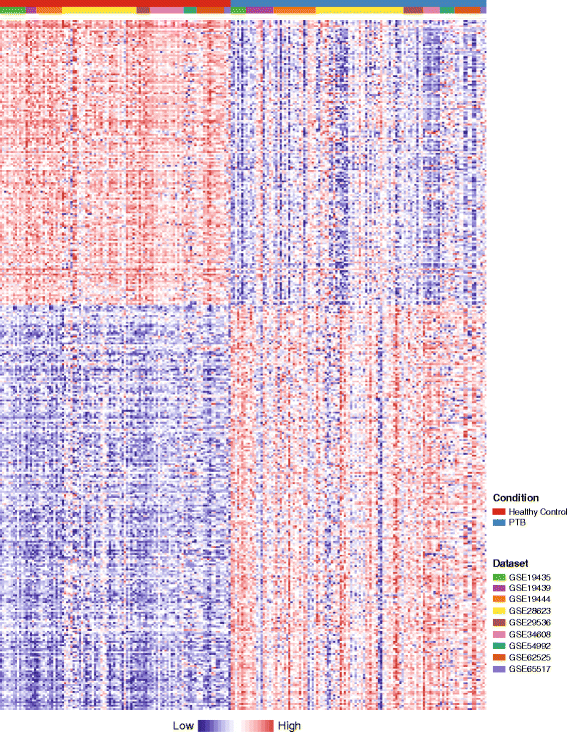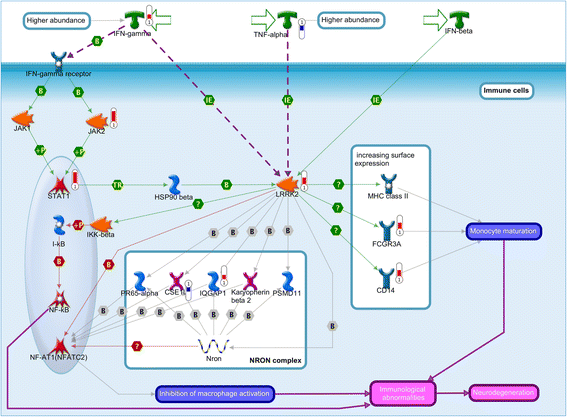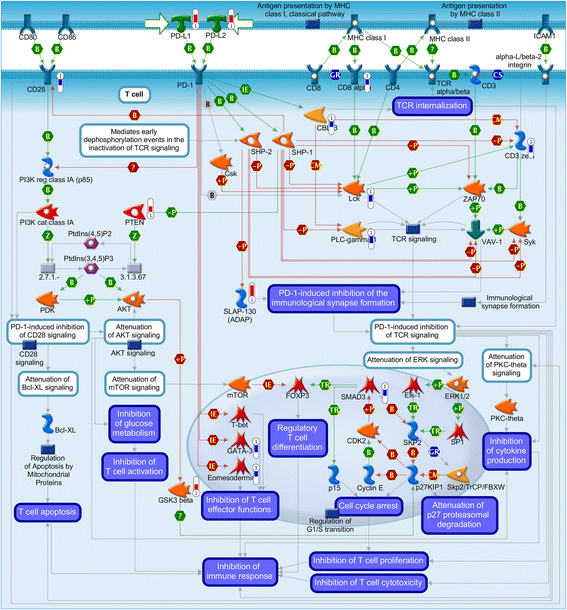Meta-analysis of human gene expression in response to Mycobacterium tuberculosis infection reveals potential therapeutic targets
- PMID: 29321020
- PMCID: PMC5763539
- DOI: 10.1186/s12918-017-0524-z
Meta-analysis of human gene expression in response to Mycobacterium tuberculosis infection reveals potential therapeutic targets
Abstract
Background: With the global emergence of multi-drug resistant strains of Mycobacterium tuberculosis, new strategies to treat tuberculosis are urgently needed such as therapeutics targeting potential human host factors.
Results: Here we performed a statistical meta-analysis of human gene expression in response to both latent and active pulmonary tuberculosis infections from nine published datasets. We found 1655 genes that were significantly differentially expressed during active tuberculosis infection. In contrast, no gene was significant for latent tuberculosis. Pathway enrichment analysis identified 90 significant canonical human pathways, including several pathways more commonly related to non-infectious diseases such as the LRRK2 pathway in Parkinson's disease, and PD-1/PD-L1 signaling pathway important for new immuno-oncology therapies. The analysis of human genome-wide association studies datasets revealed tuberculosis-associated genetic variants proximal to several genes in major histocompatibility complex for antigen presentation. We propose several new targets and drug-repurposing opportunities including intravenous immunoglobulin, ion-channel blockers and cancer immuno-therapeutics for development as combination therapeutics with anti-mycobacterial agents.
Conclusions: Our meta-analysis provides novel insights into host genes and pathways important for tuberculosis and brings forth potential drug repurposing opportunities for host-directed therapies.
Keywords: Drug repurposing; Gene expression signature; Host-direct therapies; Parkinson’s disease; Tuberculosis.
Conflict of interest statement
Ethics approval and consent to participate
Not applicable.
Consent for publication
Not applicable.
Competing interests
ZW, SA, JRB and MMS were employees in GlaxoSmithKline at the time of this study.
Publisher’s Note
Springer Nature remains neutral with regard to jurisdictional claims in published maps and institutional affiliations.
Figures





References
-
- World Health Organization. Global tuberculosis report 2016. Ref type: report. Geneva: World Health Organization; 2016. p. 1–306. http://apps.who.int/medicinedocs/documents/s23098en/s23098en.pdf.
Publication types
MeSH terms
LinkOut - more resources
Full Text Sources
Other Literature Sources
Medical
Research Materials

